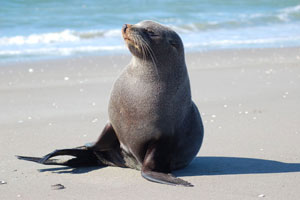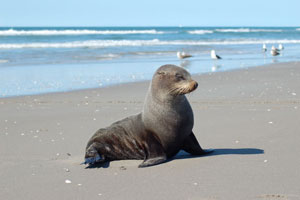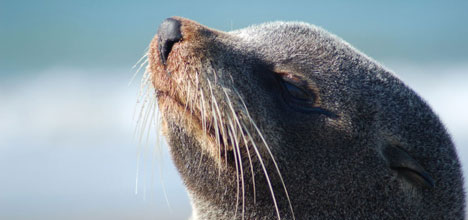Native fur seals, or kekeno, may look cute as they start turning up on BOP beaches again, but according to the Department of Conservation people should keep well away from them.
DOC community relations programme manager Katrina Knill says the public would do well to leave them alone and observe them from a safe distance.
'It is important to remember these are wild animals and to treat them with caution and leave them be as much as possible.”
 |
 |
| Photos of a seal on Papamoa Beach, just out from Harrison's Cut, sent in to SunLive by Cathy Monnington . |
Fur seals can bite if threatened and they can exert up to two tonnes per square centimetre of pressure. They are able to bite completely through a fish including its backbone. They are also capable of carrying diseases that can be passed on to humans.
DOC advises getting no closer to the animals than 20 metres and not to touch them at all.
Its website advises to keep children and dogs away from seals and to never feed them or block their access to water.
However, Katrina says if you see a seal and think it might be injured or a danger to the public you can ring 0800 DOC HOT (0800 362 468).
Although kekeno are the most common seals seen around the waters of Tauranga, other varieties are also sometimes found here like the leopard seal that recently visited Matapihi. Seals, whales and dolphins are all protected animals under the Marine Mammals Protection Act.



0 comments
Leave a Comment
You must be logged in to make a comment.